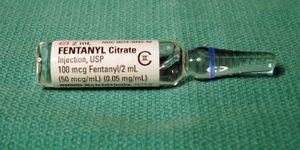
A vaginal ring that discreetly delivers a potent anti-HIV drug was reported to reduce overall HIV infections among young women by nearly 30%. This simple but effective device could be the game-changer in the fight against the HIV/AIDS epidemic.
Of the 35 million people living with HIV infection, more than 25 million are in the sub-Saharan Africa region. Sadly, women account for more than half of these numbers, as contraception and other means of HIV protection are severely limited to this population. The risk of HIV infection is highest among young adolescent girls, who are less able to negotiate sexual relationships and, importantly, condom use.
The silicone vaginal ring protects against HIV by releasing the antiretroviral (ARV) drug dapivirine, an inhibitor of the reverse transcriptase enzyme in HIV-1. Worn discreetly in the vaginal canal and changed every four weeks, the ring provides a continuous and sustained dose of ARV that’s not offered in any other method of HIV protection.
In large multinational clinical trials of over 2,6000 women living in sub-Saharan Africa, researchers found that the ring reduced HIV infections by 27% overall. This protection increased to 61% for women over 25 years old. However, the protection decreased to 10% for women younger than 25 years old. This difference is likely due to consistency of use among the younger women.
The results were reported recently at the Conference on Retroviruses and Opportunistic Infections (CROI) in Boston and published online in the
New England Journal of Medicine.
"Women have been waiting for this. The options we currently have are just too limited. The trial results show that we can provide women with a means of protecting themselves from HIV, ways that don't require the active participation of their male partner, this is potentially groundbreaking,” said Divya Bajpai, senior advisor for sexual and reproductive health and rights at the International HIV/AIDS Alliance.
Indeed other methods of HIV protection have been shown to be ineffective because it was difficult to use or required the knowledge and consent of the male partner. The ring works better because it’s easy and allows women to be in full control without compromising the effectiveness of the ARV drug.
"To help bring about an end to the HIV/AIDS epidemic, women--especially those in sub-Saharan Africa--need multiple options for HIV prevention," said Jared Baeten, who co-led the study for the NIH-funded Microbicide Trials Network (MTN).
The potential for the anti-HIV ring is huge, and researchers are now working to increase its use in adolescent girls and young women. The age-related effects are apparent for this device, and it’s unclear what influenced the lower protection rate for these younger women.
Ultimately, the ring offers an effective, easy-to-use, discrete method of HIV prevention, especially for the women living in underdeveloped regions like sub-Saharan Africa.
Additional Source:
EurekAlert!
 A vaginal ring that discreetly delivers a potent anti-HIV drug was reported to reduce overall HIV infections among young women by nearly 30%. This simple but effective device could be the game-changer in the fight against the HIV/AIDS epidemic.
A vaginal ring that discreetly delivers a potent anti-HIV drug was reported to reduce overall HIV infections among young women by nearly 30%. This simple but effective device could be the game-changer in the fight against the HIV/AIDS epidemic.







